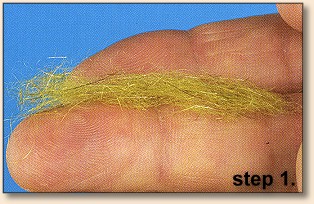
1. Tease out a sparse mat of abdomen dubbing about 2" long and 1/2"
wide, as shown. Set the dubbing aside.
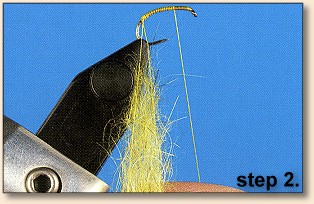
2. Mount the thread and position it at the tailing point.
Form a dubbing loop...about 3" long. Position the tying
thread 1/3 the shank-length behind the hook eye. Carefully
insert the mat of dubbing in the loop.
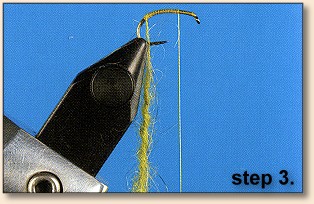
3. Twist the dubbing loop tightly.
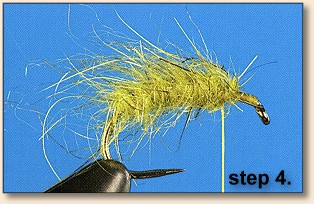
4. Form the abdomen over the rear 2/3 of the shank. Bind and clip
the excess dubbing loop if any remains.
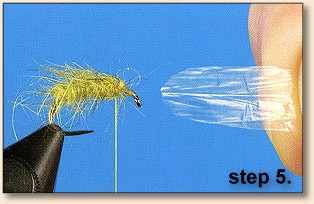
5. Cut a piece of sheath material about 1 1/2 hook-gaps in
width. Round the rear edge as shown.
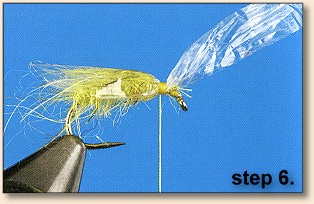
6. Place the sheath over the abdomen. The material should
be wide enough to roll down and enclose the sides of the
abdomen. The rear edge should project a short distance
beyond the hook bend. Secure the material directly in
front of the abdomen.
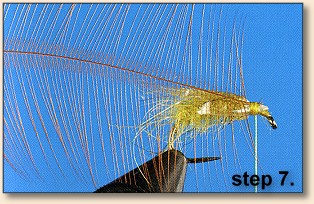
7. Using the procedure explained in tip-mounted hackle,
prepare and mount the hackle feather.
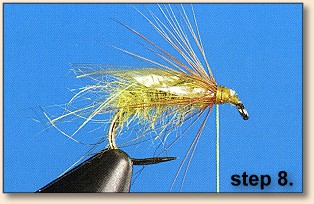
8. Take 2-4 wraps of the feather as shown in wrapping
wet-fly hackle. Tie off and clip the excess.
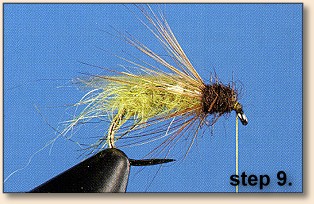
9. Use the direct dubing method to dub a thorax just
short of the hook eye.
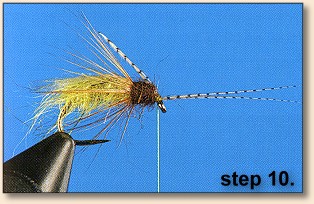
10. Mount two woodduck fibers extending over the hook
eye about one hook-length.
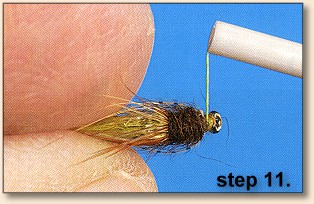
11. Draw one fiber down each side of the body, and
take a few wraps over the folded base of the fibers
to hold them in this position, as shown in this top
view. Form the head of the fly and whip finish.
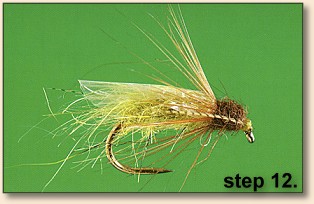
12. Finished fly. ~ Jim Schollmeyer,Ted Leeson
Credits: This fly is an excerpt from Tying Emergers
by Jim Schollmeyer and Ted Leeson. Published by Frank Amato Publications.



